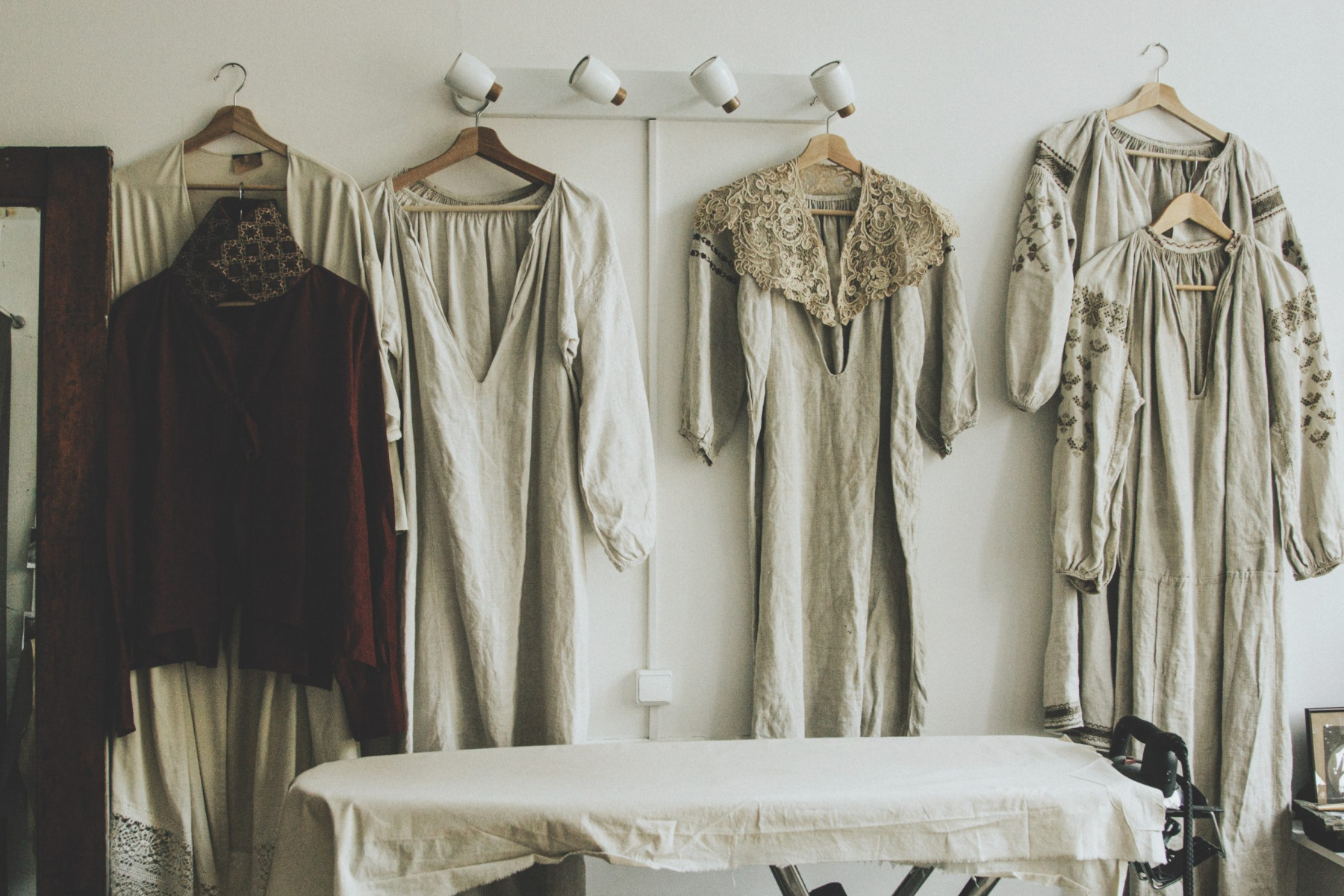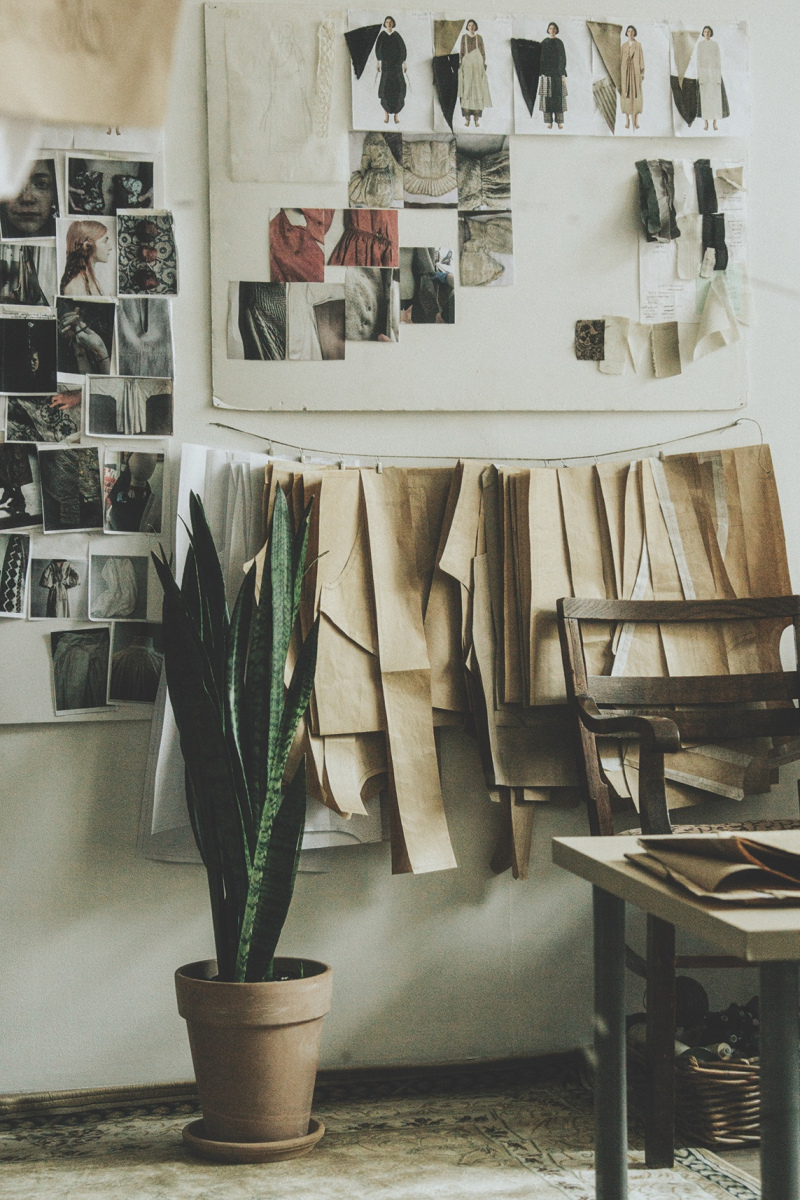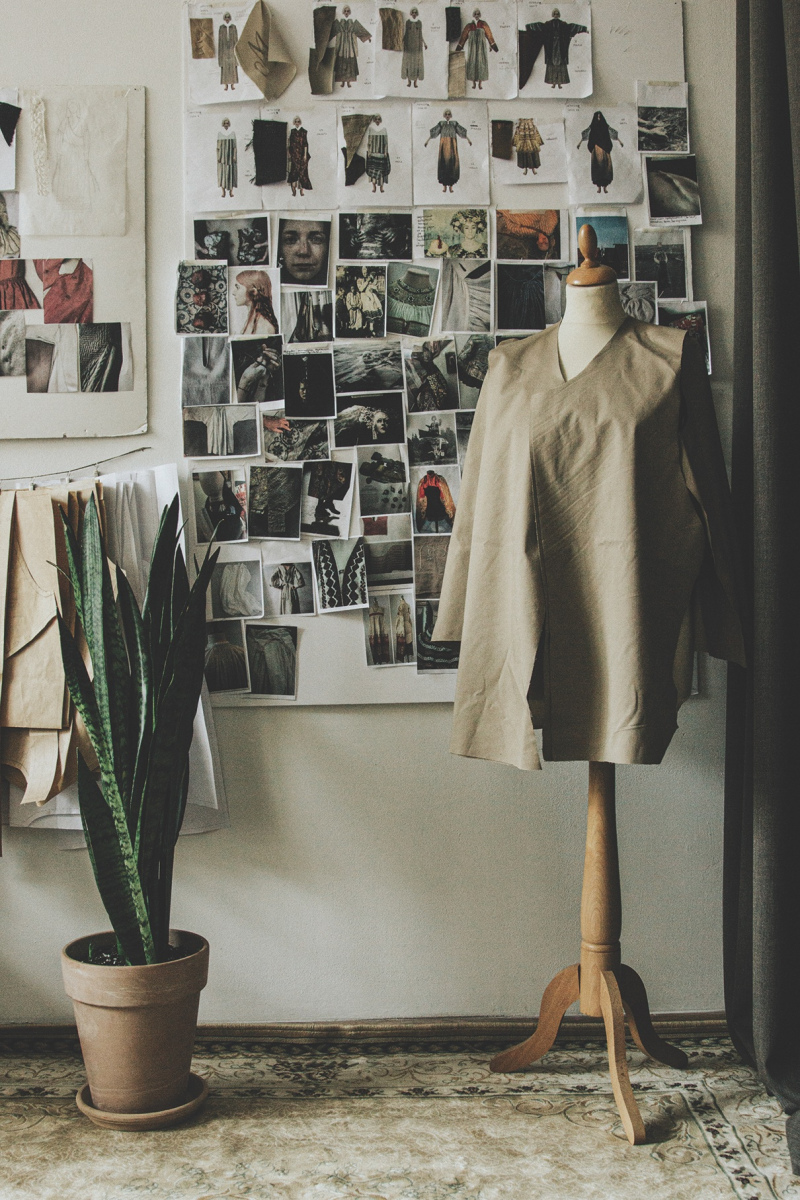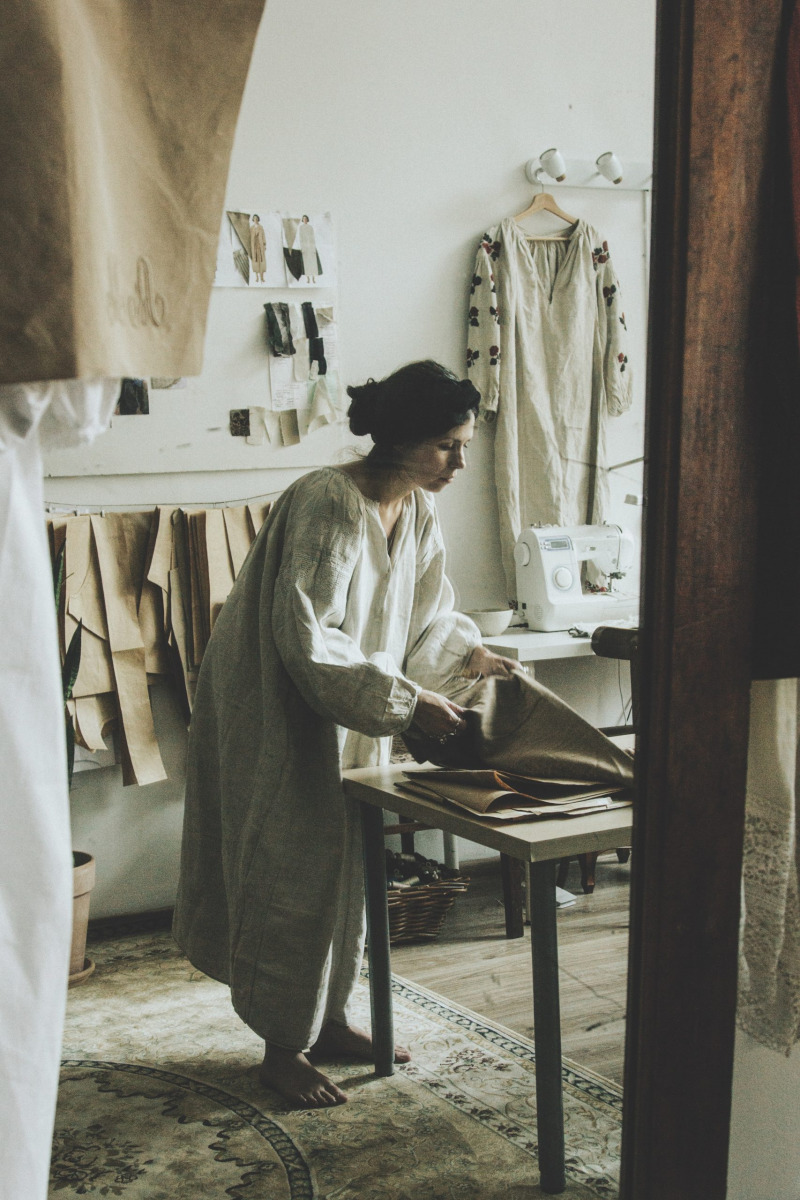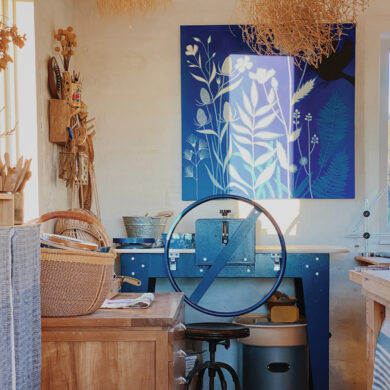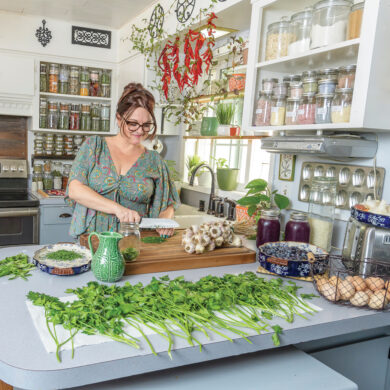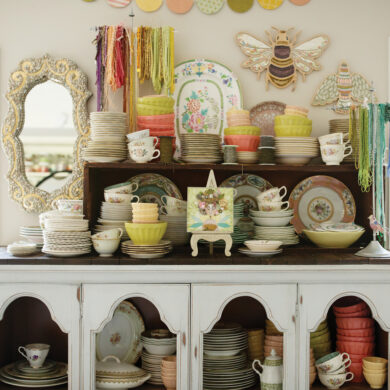I spent my childhood in between three countries: France, Belgium and Russia. I hardly visited Russia, lived in Belgium for five years, and I grew up in France. My father is a diplomat and always listened to French music: Serge Gainsbourg, Jeanne Mas, Marie Laforêt—that was the first thing I loved. My mother is a painter, and she also worked at the embassy at different posts, but her soul was always in painting, in buying canvases, paints and albums. Inspired by her work, I always wanted to learn the same skill. She has always tried new things, and always is showing curiosity in everything.
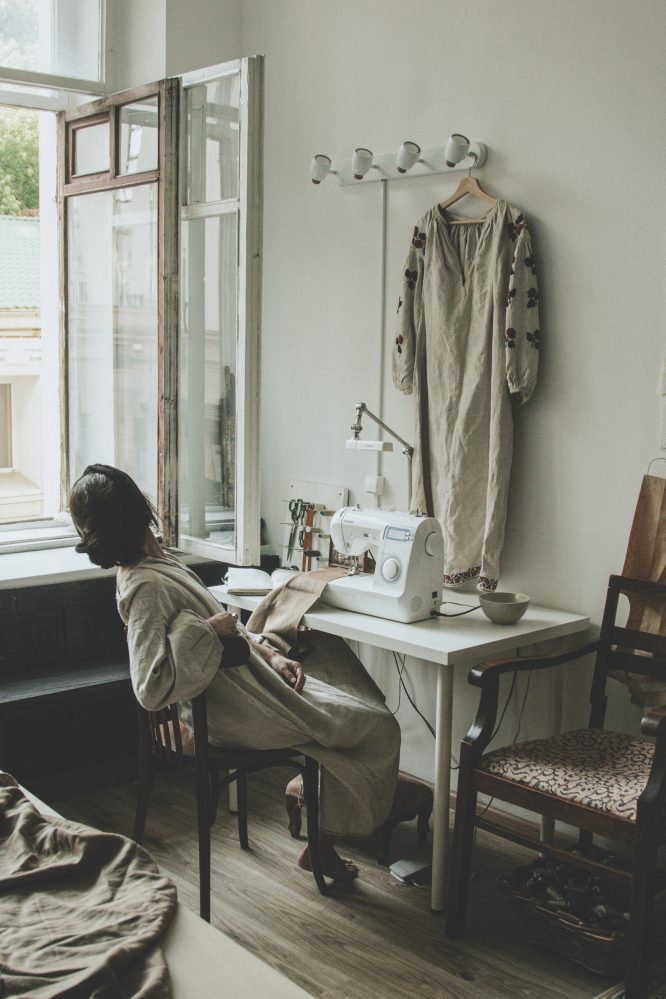
I attended the prestigious fashion school in Paris, the Atelier Chardon Savard, while remembering my previous dream of being a fashion designer at the age of nine. How could I have ever forgotten about that? At the school we were taught more about revealing individuality than sewing and designing. Having received my diploma, I realized that I never learned how to sew, so I decided to pursue my masters.
Even during my studies, I began to get interested in the Russian countryside and grandmothers, as all my mood boards were being filled with them. While living in France, I had only visited Russia during short holidays, not enough time to know and discover it. I didn’t feel any involvement in her, did not feel the love towards her. I did not think about her, and I thought I would live like that all my life in France. But one day, my grandfather started showing my old family photographs, telling me stories about my ancestors, and I got carried away by it—the question of where I came from.
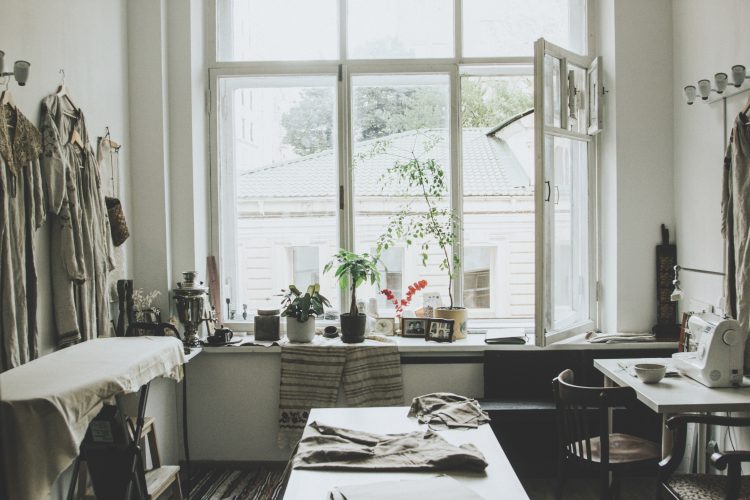
I thought that history was something of mine, something warm that protects me, that lives somewhere inside of me, but that something is what I have forgotten. I began watching old classic Soviet movies and began to travel to Moscow more often. My love to talk and read in Russian grew, and all of it ended in my move from Paris to Moscow.
After graduating from school and working as a stylist in Paris and Milan, I decided to lock myself in my room and sew. My moodboard began being filled with Russian villages once more, but without its grandmothers and rather with the inhabitants of those villages from the late 19th through the beginning of the 20th centuries. I was looking through old photographs of my own great-grandfathers and great-grandmothers. I was drawing my family tree, and through all of that, my first collection was about those old villages and their inhabitants—the ordinary working peasants.
After my move from Paris to Moscow, I got access to the much-needed books and museums. Through clothing I search for myself, and I remember my ancestors. I study old clothing, but I’m not a reconstructor. I’m a designer. I invent modern clothing while being inspired by classic pieces.
I only work with natural fabrics. In Russia, finding good fabric is complicated. We do not produce anything thus far, so my fabric comes from France and from Italy, buying out the remains of collections from large fashion houses.
Yet, in Russia, you can find old homespun, which is sold in rolls and isn’t big in width. It’s made of linen, nettle, and hemp. I once bought a roll of old linen, and I still work with it. On the shelves I have old ribbons and lace that are still waiting for their time, brought to me by friends or bought at flea markets.
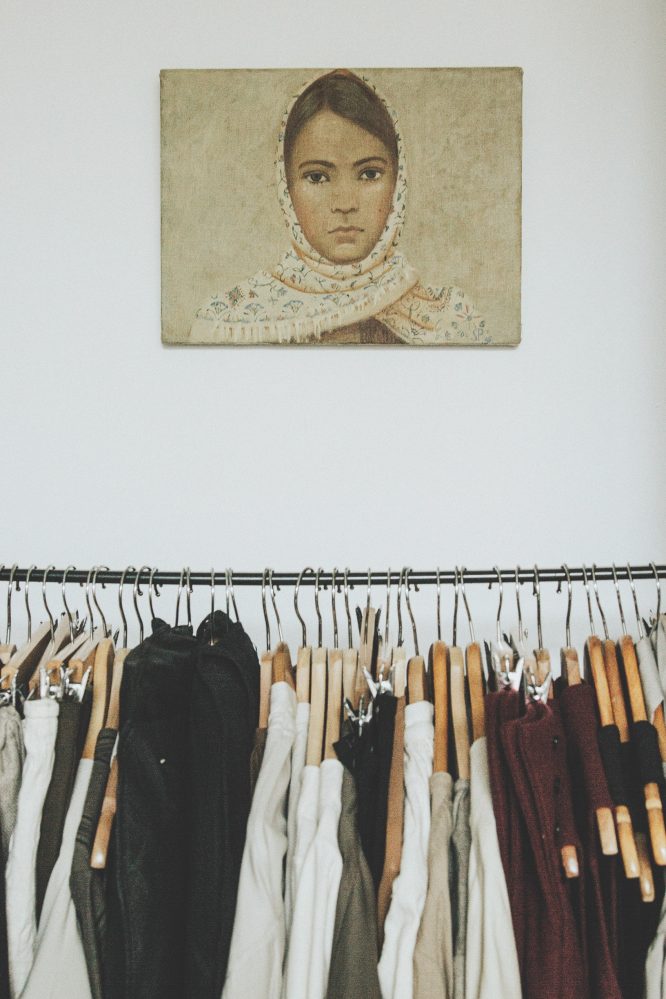
My buyers are all different, but they’re all creative people who know how to appreciate the new while remembering the old. They discover me through Instagram and then arrive at my atelier. My atelier—it’s my comfort, it’s my territory. There I feel like myself, in my own place. It’s situated in the very center of Moscow in a small room of a house, where many other ateliers of different artists take part.
I made it so my workshop would be a pleasant place to come to talk, to drink tea from a samovar, to look at fabrics, and try on clothes. I put a big rug on the floor where you can lie down, and I put frames all around with photographs of my great-great-grandmothers. It’s my world.
I spent my childhood in between three countries: France, Belgium and Russia. I hardly visited Russia, lived in Belgium for five years, and I grew up in France. My father is a diplomat and always listened to French music: Serge Gainsbourg, Jeanne Mas, Marie Laforêt—that was the first thing I loved. My mother is a painter, and she also worked at the embassy at different posts, but her soul was always in painting, in buying canvases, paints and albums. Inspired by her work, I always wanted to learn the same skill. She has always tried new things, and always is showing curiosity in everything.

I attended the prestigious fashion school in Paris, the Atelier Chardon Savard, while remembering my previous dream of being a fashion designer at the age of nine. How could I have ever forgotten about that? At the school we were taught more about revealing individuality than sewing and designing. Having received my diploma, I realized that I never learned how to sew, so I decided to pursue my masters.
Even during my studies, I began to get interested in the Russian countryside and grandmothers, as all my mood boards were being filled with them. While living in France, I had only visited Russia during short holidays, not enough time to know and discover it. I didn’t feel any involvement in her, did not feel the love towards her. I did not think about her, and I thought I would live like that all my life in France. But one day, my grandfather started showing my old family photographs, telling me stories about my ancestors, and I got carried away by it—the question of where I came from.

I thought that history was something of mine, something warm that protects me, that lives somewhere inside of me, but that something is what I have forgotten. I began watching old classic Soviet movies and began to travel to Moscow more often. My love to talk and read in Russian grew, and all of it ended in my move from Paris to Moscow.
After graduating from school and working as a stylist in Paris and Milan, I decided to lock myself in my room and sew. My moodboard began being filled with Russian villages once more, but without its grandmothers and rather with the inhabitants of those villages from the late 19th through the beginning of the 20th centuries. I was looking through old photographs of my own great-grandfathers and great-grandmothers. I was drawing my family tree, and through all of that, my first collection was about those old villages and their inhabitants—the ordinary working peasants.
After my move from Paris to Moscow, I got access to the much-needed books and museums. Through clothing I search for myself, and I remember my ancestors. I study old clothing, but I’m not a reconstructor. I’m a designer. I invent modern clothing while being inspired by classic pieces.
I only work with natural fabrics. In Russia, finding good fabric is complicated. We do not produce anything thus far, so my fabric comes from France and from Italy, buying out the remains of collections from large fashion houses.
Yet, in Russia, you can find old homespun, which is sold in rolls and isn’t big in width. It’s made of linen, nettle, and hemp. I once bought a roll of old linen, and I still work with it. On the shelves I have old ribbons and lace that are still waiting for their time, brought to me by friends or bought at flea markets.

My buyers are all different, but they’re all creative people who know how to appreciate the new while remembering the old. They discover me through Instagram and then arrive at my atelier. My atelier—it’s my comfort, it’s my territory. There I feel like myself, in my own place. It’s situated in the very center of Moscow in a small room of a house, where many other ateliers of different artists take part.
I made it so my workshop would be a pleasant place to come to talk, to drink tea from a samovar, to look at fabrics, and try on clothes. I put a big rug on the floor where you can lie down, and I put frames all around with photographs of my great-great-grandmothers. It’s my world.




